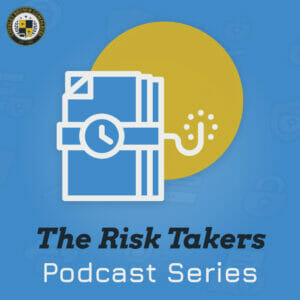Written by: Nick Freeman
It was a regular Tuesday morning.
The HR director of a mid-sized manufacturing firm was scanning her inbox when an urgent email arrived. A line supervisor reported that one of the team leads—normally dependable and calm—had been snapping at coworkers, isolating himself, and making dark jokes about “finally having enough.” A few days earlier, he had been seen pacing in the parking lot, visibly upset after a tense meeting with management.
Any one of these behaviors might not raise alarms. Together, they signaled that something was wrong—and that the organization might be one heated moment away from a serious workplace incident.
For companies in manufacturing, healthcare, logistics, and corporate offices, this scenario is all too real. Workplace violence rarely erupts without warning. There are almost always pre-threat behavioral indicators, and leaders who recognize them can intervene before a crisis occurs.
Why Hidden Threats Keep HR and Legal Leaders Awake at Night
For Human Resources directors, General Counsel, COOs, and risk leaders, the workplace is a balancing act. You must:
- Protect employees from harm
- Stay compliant with workplace safety and employment laws
- Maintain business continuity and protect the company’s reputation
The problem is that the first signs of danger are often subtle:
- A reliable employee suddenly becomes irritable or withdrawn
- Minor conflicts start escalating in tone
- Anonymous complaints mention intimidating or threatening behavior
- Personal crises—divorce, financial stress, or legal trouble—begin to spill into the workplace
Internal investigations often reveal that multiple employees noticed these signals weeks or months before an incident. But without a process to connect the dots, the organization remains exposed.
According to the Occupational Safety and Health Administration (OSHA), nearly 2 million U.S. workers report being victims of workplace violence each year, and many more near misses go unreported. The costs range from potential lawsuits to devastating human consequences.
The Critical Role of Pre-Threat Behavioral Indicators
Workplace violence almost always follows a discernible escalation pattern. Recognizing that pattern early is critical.
Common indicators include:
- Escalating verbal aggression—raised voices, personal insults, or hostile emails
- Social withdrawal—sudden isolation from coworkers or team activities
- Fixation on grievances—persistent anger over perceived unfair treatment or discipline
- Visible personal stressors—family, financial, or legal problems affecting behavior
- Physical cues—pacing, clenched fists, or erratic body language
- Comments about violence or weapons, sometimes shared casually or online
It is rarely a single event that signals danger. Instead, risk becomes clear when these indicators accumulate over time.
Case in Point: The Missed Signals of a Near-Tragedy
Consider a logistics company in the Midwest. One of their warehouse supervisors was going through a bitter divorce. Over a few months, coworkers noticed:
- He stopped joining team lunches
- He overreacted to small mistakes
- He spent long periods alone in his car during breaks
No formal report was filed. HR only became aware after a night shift supervisor found him in the parking lot, visibly distressed and gripping a baseball bat while talking about “getting even.”
Fortunately, security intervened before the situation turned violent. Later, an internal investigation revealed that five different employees had observed warning signs for weeks. None of them knew how to escalate their concerns. This scenario is more common than most leaders realize. The signals were there. The process to act on them was not.
From Observation to Action: Building a Prevention Framework
Preventing workplace violence requires more than a handbook and an annual training session. A proactive strategy includes:
1. Creating an Early-Warning Culture
Employees need to feel safe raising concerns without fear of retaliation. Encourage managers to document and report changes in behavior so small pieces of information can be connected.
2. Acting Quickly on Reports
When a report comes in, investigate promptly and document findings. A single complaint may seem minor, but combined with other observations, it can reveal serious risk.
3. Leveraging Protective Intelligence
Chesley Brown’s Protective Intelligence solutions collect and analyze behavioral data across HR, security, and legal teams. By identifying patterns instead of isolated incidents, leaders can take action before threats escalate.
4. Aligning HR and Legal
HR and General Counsel should work in tandem. Coordinated action protects both employees and the organization by keeping investigations compliant while reducing liability.
5. Implementing Strategic Prevention Measures
Once patterns emerge, leaders may:
- Offer Employee Assistance Programs (EAPs) or professional counseling
- Adjust duties or workplace settings temporarily
- Increase on-site security or monitoring in sensitive areas
- Engage Fractional CSO or security consulting services to develop a long-term prevention plan
Why Mid-Sized Companies Are at the Greatest Risk
Large corporations often have dedicated security and intelligence teams. Small companies can spot changes quickly because everyone knows each other.
Mid-sized companies sit in the most vulnerable position:
- Big enough that warning signs get lost across departments
- Small enough that a single incident can disrupt operations or destroy morale
- Often without a full-time security executive or intelligence function
This gap is why many mid-market companies partner with Chesley Brown for Fractional CSO services and Protective Intelligence programs. These services help organizations identify, track, and act on risk signals before they escalate.
The Takeaway: Prevention Beats Reaction Every Time
Workplace violence is a risk that organizations cannot afford to overlook. Early recognition of pre-threat indicators, prompt internal investigations, and proactive intelligence programs can prevent tragedy and protect both people and the business.
Leaders who act on subtle signals avoid the nightmare of learning the hard way. Those who wait until the news trucks arrive are already too late.
In Conclusion
If your organization has ever wondered whether it’s catching all the early warning signs, Chesley Brown International can help.
Our Fractional CSO services, Protective Intelligence solutions, and corporate security consulting are designed to give HR leaders, legal teams, and executives the clarity they need to spot and address threats before they escalate.
Sign up!
For industry-leading guides and analysis sign up for our blog below.
Latest News
risk-takers #04 Brad Orsini – Community-based Security
Visiting our places of worship shouldn’t be dangerous. Unfortunately, faith-based organizations are facing the difficult challenge of how to protect their congregations from religion-motivated violence, and still maintain the welcoming, open environment community members expect.
In this week’s episode Brent calls up Bradley Orsini, the Senior National Security Advisor of the Secure Community Network, the official safety and security organization of the Jewish community in North America to discuss these issues, lessons learned from the mass shooting at the Tree of Life Synagogue, and the most effective strategies faith-based organizations can use to protect their congregations.
Read MorePodcast | Risk Takers Series #04 Brad Orsini – Community-based Security
Visiting our places of worship shouldn’t be dangerous. Unfortunately, faith-based organizations are facing the difficult challenge of how to protect their congregations from religion-motivated violence, and still maintain the welcoming, open environment community members expect.…
Read Morerisk-takers #3 Surveillance Detection Routes (SDR)
Have you ever had a gut feeling you were being followed? You might not be so crazy after all. It’s a frightening thought. You’ve spent years building your business, but all it takes is one bad day to compromise that dream. In this week’s episode Brent sits down with FBI Special Agent (Ret.) Dell Spry to discuss surveillance detection routes, what they are, and how they can be used as a spy detector device to find out if you are under surveillance.
Read MorePodcast | Risk Takers Series #3 Surveillance Detection Routes (SDR)
Have you ever had a gut feeling you were being followed? You might not be so crazy after all. It’s a frightening thought. You’ve spent years building your business, but all it takes is one…
Read MoreHow to Prepare for Economic Risk
Best Strategies for Building Resiliency How to position your business for uncertainty If there is one aspect of business that is certain, it’s uncertainty. It might also be the understatement of the year to say…
Read More





